When we read the letters of Paul, we often skip over the introductions and the conclusions in our impatience to get to the heart of the letter. But in doing so, we might miss some things that tell us a lot about Paul, his ministry, his material cultural context, and even how we managed to have access to his letters at all.
First, and briefly, notice something about the introductions to his letters:
Paul, called to be an apostle of Christ Jesus by the will of God, and our brother Sosthenes… (1 Cor 1.1)
Paul, an apostle of Christ Jesus by the will of God, and Timothy our brother… (2 Cor 1.1)
Paul, an apostle—sent not with a human commission nor by human authority, but by Jesus Christ and God the Father, who raised him from the dead—and all the brothers and sisters with me… (Gal 1.1–2)
Paul and Timothy, servants of Christ Jesus… (Phil 1.1 a)
Paul, an apostle of Christ Jesus by the will of God, and Timothy our brother… (Col 1.1)
Paul, Silas and Timothy, to the church of the Thessalonians in God the Father and the Lord Jesus Christ… (1 Thess 1.1)
Paul, Silas and Timothy, to the church of the Thessalonians in God our Father and the Lord Jesus Christ… (2 Thess 1.1)
Did you spot it? Almost all of Paul’s letters to ‘churches’ or congregations (Christians in a city) are shared activities; the only ones missing here, which Paul implies are written by him alone, are to the Romans and to Ephesians. This is significant in offering an insight to Paul’s ministry, which is made very clear in Acts; Paul almost never acts alone, but engages in mission and ministry with at least one other, and often in groups. Note that, on the only occasion when he is alone (in Athens, in Acts 17) this is the one time where he fails to establish a congregation of believers.
But think again: how does that work in the writing of a letter? Because of our own cultural context, and how we experience ‘writing’, we assume that Paul was sitting at a desk, on his own, pen in hand, writing these letters—as show in the picture above. Notice that we still use the term ‘writing’ for what we do, even though we are not writing, we are typing. We ‘write’ emails; we ‘write’ comments on social media; I am ‘writing’ this article. Yet all the time, we are not writing at all. Someone in the distant future, who did not know much about our material culture, might not realise that we were not in fact writing, and would wonder how all these things that we ‘wrote’ found their way onto websites!
If we are not familiar with Paul’s material culture—how letter writing was undertaken in the ancient world—then we might make similar mistakes. One fact confronting us here is that, for Paul, not only ministry but also letter-writing was a shared activity. The letters to the Thessalonians are written by three, and (if we take his comments seriously) the letter to the Galatians was a group writing exercise! In my experience, much scholarly discussion of Paul’s letters, and in particular whether he wrote them, assume our modern mistaken view of Paul as sole author working in isolation.
There is no doubt that Paul is a leading voice in his writing, not least because he often uses the first person personal pronoun (‘I am astonished…’). But there are other reasons to take seriously the letter-writing as a shared activity—for evidence of which we turn to the endings of some of Paul’s letters.
Have you previously noticed these comments in the endings of some Paul’s letters?
See what large letters I make when I am writing in my own hand! (Galatians 6.11)
I, Paul, write this greeting with my own hand. Let anyone be accursed who has no love for the Lord. Our Lord, come! The grace of the Lord Jesus be with you. My love be with all of you in Christ Jesus. (1 Cor 16.21–24)
I, Paul, write this greeting with my own hand. Remember my chains. Grace be with you. (Col 4.18)
I, Paul, write this greeting with my own hand. This is the mark in every letter of mine; it is the way I write. The grace of our Lord Jesus Christ be with all of you. (2 Thessalonians 3:17–18)
I, Paul, am writing this with my own hand: I will repay it. I say nothing about your owing me even your own self. (Philemon 19)
Why are these comments so significant? Because they are clear evidence that Paul has not himself been writing up until this point! Having had the letter written by a scribe, Paul himself now takes up the writing implement with his own hand and adds his greeting as verification of the letter’s authenticity. (The fact that only Paul does this confirms his leading role in composition.)
This practice is clearly attested from a rather surprising source—the 1,700 wooden writing tablets found at the Roman fort of Vindolanda on Hadrian’s wall. (You can volunteer to help with ongoing excavations if you are interested.) The tablets are important for at least three reasons. First, they demonstrate the use of another writing medium, ink on thin slices of local woods. Secondly, they give insight into the daily life of Romans in the first centuries AD.
The tablets contain various letters of correspondence. For instance, the cavalry decurion Masculus wrote a letter to prefect Flavius Cerialis inquiring about the instructions for his men for the following day, including a polite request for more beer to be sent to the garrison (which had entirely consumed its previous stock of beer). The documents provide information about various roles performed by the men at the fort, such as a keeper of the bath-house, shoe-makers, construction workers, medical doctors, maintainers of wagons and kilns, and those put on plastering duty. One of the tablets confirms that Roman soldiers wore underpants (subligaculum), and also testifies to a high degree of literacy in the Roman army.
The third is the observation made at the end of this quotation—the high degree of literacy for certain groups in the Empire. If people could write notes like this to talk about supplies of beer, apples, and roof tiles, why would they not write down the teaching of the person who claimed to the long-awaited Messiah? There is no reason for us to assume complete illiteracy amongst those who heard the teaching of Jesus—not least given that many of them were running small businesses.
But most pertinent to our question about Paul’s writings is the earliest tablet to be found and translated.
The best-known document is perhaps Tablet 291, written around 100 by Claudia Severa, the wife of the commander of a nearby fort, to Sulpicia Lepidina, inviting her to a birthday party. The invitation is one of the earliest known examples of writing in Latin by a woman. There are two handwriting styles in the tablet, with the majority of the text written in a professional hand (thought to be the household scribe) and with closing greetings personally added by Claudia Severa (on the lower right hand side of the tablet).
Here is the right hand side of the diptych panels, with the translation of the whole tablet (my photograph of the British Museum exhibit):
Notice that there is no explanation, but that the writing changes from the more regular style, presumably of a household scribe of some kind, to the more irregular handwriting of the scribe’s mistress, Claudia Severa. As with Paul, the tone becomes more personal. Note also that the woman does not introduce herself, but assumes that the recipient will recognise the personal greeting. Thus, we might expect that the personal greetings in Paul’s letters at the end were all written by him, even when he does not mention that he is now writing personally.
(I should add that I am amazed that the evidence of the Vindolanda tablets is not referred to more in discussions about literary, communication, and letter writing in the ancient world in relation to the production of the New Testament documents.)
Randolph Richards gives a very helpful overview of letter-writing in the first century, including methods of composition, use of scribes, and forms of writings including endings and greetings. He comments:
The sender’s handwriting authenticated the letter, the ancient equivalent of our signature. We see these changes in handwriting in two ways. First, in the original letter, pulled from the sands, we can see the change in handwriting, indicated by modern editors with “[2nd hand].” A minority of writers expected copies to also circulate. Since copies no longer show the handwriting change, they explicitly noted it: “Greetings to Pilia and Atticus . . . The rest I write to you in my own hand” (Cic. Att. 12.32.1).
This again demonstrates that Paul’s practice here was common. Remarkable testimony to this comes in Romans 16.22, where the scribe actually steps out, as it were, from behind Paul’s dictation, and introduces himself:
I Tertius, who wrote this epistle, salute you in the Lord.
This seems highly unusual, and we know nothing else about this person, and can only guess at his exact role in the composition of the letter.
Lincoln Blumell has written an excellent article, available online, giving an overview of the issues here arising from what we know of first century practice. (I think this article and the interesting volume of which it is a part is little known since the authors are all Mormons.) He sets out the range of possible roles of scribes in composition:
For letter writing, a scribe could be used in a variety of ways, but three appear most prominent from the source material: recorder, editor, or substitute author. At the most basic level, a scribe could simply serve as a kind of recorder. Either the author would provide the scribe with a written draft of a letter that was to be recopied in a neat hand or would dictate the letter verbally to the scribe…
Another role a scribe could play in the writing of a letter was that of editor. However, depending on the skill of the scribe and the relationship between the author and scribe, the editorial responsibilities invested in the scribe might vary substantially. In the writing of the final draft, some scribes were permitted to make only minor changes to the author’s rough draft, whether it was a written rough draft presented to the scribe or whether it had been a dictated rough draft from the author. On the other hand, some scribes were given slightly more power over the final draft of a letter, being permitted to tinker with its vocabulary, style, and form…
The last way in which a scribe could function in the letter-writing process was in the role of substitute author. Here the scribe was given considerable, and in a few rare cases total, control over the final draft of the letter. While the author would inform the scribe of the occasion or purpose of the letter and might possibly give him a general outline to follow, the actual writing of the letter was done by the scribe, and consequently the vocabulary, style, form, and even certain parts of the letter’s content would have been solely the scribe’s. Yet for all intents and purposes, the letter was still considered to be authentically the sender’s, as he was always expected to read over the final draft and ensure that it accurately conveyed what he intended.
We have no way of knowing which of these roles Paul’s scribes fulfilled, and there is no reason to limit them to one role only. In all three cases, the letter would still be considered the genuine author of the letter, not least because this person would still check the letter—and sign it off personally with a greeting.
This has significant implications for arguments about genuine Pauline authorship of the letters traditionally ascribed to him, based on variations of style, language, and vocabulary. As Blumell goes on to note:
For quite a while it has been argued in certain quarters of scholarship that some of Paul’s letters were not actually written by him but rather by later Christians writing in his name. Central to the argument that certain of Paul’s are actually pseudonymous is the claim that these letters are stylistically different and tend to employ a different vocabulary than the seven undisputed letters bearing Paul’s name…
On stylistic grounds, the argument most often marshaled against their authenticity has to do with their unique sentence structure. In these letters, sentences tend to be very long, complicated, and are marked with a lot of hypotaxis (the frequent use of subordinate clauses), whereas in the “genuine” letters the sentences tend to be quite short and are very concise and succinct…
The other kind of argument typically marshaled to support the claim that some of Paul’s letters are pseudonymous has to do with the allegedly different diction they employ when compared with the “genuine” letters…
While such statistical studies are interesting in that they do highlight literary trends and differences among the various Pauline letters, much of the force of such arguments is completely blunted when one recognizes and acknowledges that Paul employed scribes frequently in his letter writing. Rather than assigning pseudonymity to certain letters, it becomes much more likely that the hand of an individual scribe is at play and ultimately responsible for the various literary differences.
This is further reinforced by the fact that Paul, in his introductions, claims that the letters are jointly composed, and this is now not hard to imagine when we think of the role of a scribe. Paul might well have conversed with his fellow ‘writers’, agreeing wording which the scribe then took down and possibly wrote up once it had been agreed, with Paul signing off the final form.
In light of how Cicero and others in antiquity employed scribes for the specific purpose of letter writing, a variety of possible scenarios exist for the ways in which Paul could have used his scribes. On one extreme, Paul could have dictated his letters to his scribes very meticulously, making sure that the ipsissima verba he spoke were written down carefully. On the other extreme, he could have given his scribes either a written or verbal outline of the main points he wished to express and expected them to flesh it out into the final form of the letter. Assuming that Paul’s scribes were close friends and associates, as was the case with Tertius, it might not seem unreasonable that they were given substantial control over the final draft of the letter.
But regardless of the capacity in which Tertius or any other of Paul’s scribes functioned, Paul was ultimately responsible for the letters written in his name. He checked over the final draft, as can be seen from the presence of either his subscription or postscript at the end of each letter, and made sure that they accurately conveyed what he intended. Therefore, despite Paul’s rather extensive use of scribes, for all intents and purposes the letters bearing his name should be regarded as authentic Pauline letters.
It is also worth our noting that the use of scribes explains the composition of the canon of Paul’s letters. It would be usual practice for the scribe to take a copy of the letter for the author’s own records. As Richards notes:
Ancient letter writers kept copies of their letters, often in “notebooks” (membranae, parchments, 2 Tim. 4:13). Cicero happened to mention making a copy of a letter while at dinner (Cic. Fam. 9.26.1). Another letter became waterlogged and thus was “lost,” but Cicero sent another copy (Cic. QFr. 2.12.4), indicating he had kept one. Our copies of Paul’s letters likely arose from copying Paul’s set, not by going around and collecting the dispatched copies. This was how the letter collections of the other writers were published (see Sue. Vit. Jul.56.6).
As I think Tom Wright has said: ‘Paul wrote none of his letters—and that is why I believe Paul wrote all of his letters!’


 Buy me a Coffee
Buy me a Coffee














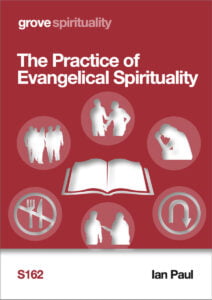
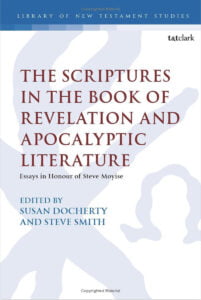

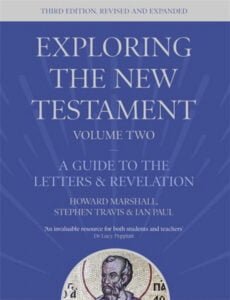
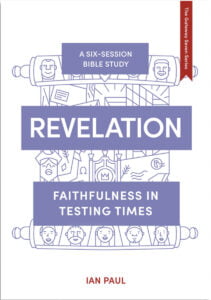
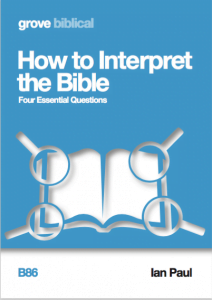
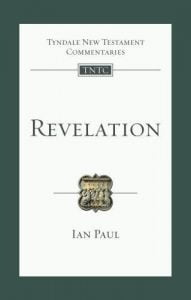

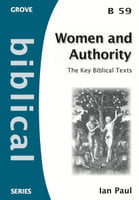
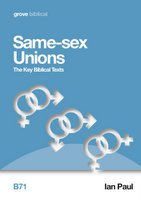




I hope you will tell us about the use of wax tablets to write draft documents before they were transcribed to papyrus.
I imagine, for example, the Gospels could have started out as a crate full of wax board notes that Luke lugged around.
Wandering around a Syrian museum, as you do…
There was a writing tablet with its own protective case/box. From memory I think it was homework.
The security guards didn’t let any photos be taken as it was Friday and closed to the general public.
The well-named PJ Wiseman (father of Assyriologist and evangelical Christian Donald Wiseman) has argued that you can see the places in Genesis where the original stone tablets were transcribed to papyrus.
Anton, Fascinating!
BTW you might find this interesting:
https://www.bemadiscipleship.com/1
He expounds Genesis 1.
Moses’ brother, the priest-secretary, was pleased as he was tired of lugging the originals around the desert for 40 years. Moses told him to keep his Aaron and keep taking the tablets. Aaron said it was a great relief.
Ha Ha Ha!
I remember reading that the original 10 commandements were probably only the size of two post cards, made of slate. Evenso, the task of keeping a record of all the court’s daily business must have been a huge undertaking.
~~~
Even if Paul travelled light, his books and office must have been moved about the mediterranean at times with some considerable effort.
All ten were on each of the two tablets – one copy for each of the two parties to the covenant.
Some 40 years ago I occasionally plugged around a heavy suitcase for Michael Botting…
It was his Grove Booklet suitcase… When it could fit in one I guess.
Nowhere does scripture state that Moses wrote Genesis, in contrast to the other four books of the Pentateuch, although he might indeed have compiled it from the tablets, perhaps in Egypt.
Since Genesis was written by at least two people, that would have been difficult.
Nowhere does scripture state … Except that the gospels frequently refer to the Law of Moses and in a way that indicates that what the Law said was tantamount to what Moses said and wrote. The Hebrew Bible was referred to loosely as ‘the Law and the Prophets’, i.e. the Torah and everything that was relevant to the question of who Jesus was after the Torah. On one occasion Psalms was also specifically differentiated (Luke 24:44). In Luke 24:27 (cf. Matt 5:17) we see Jesus explaining how the Scriptures all pointed to him. It is doubtful that he did not start from Genesis (Gen 3:15, 22:8 etc).
In these contexts the Law – Heb. Torah – was not just the laws, statutes and commandments but the entire books that contained them. Still today, the Torah designates all five books of the Pentateuch so far as I am aware, therefore including Genesis. This is not to preclude some later editorial updating, in Genesis chapter 10 and various other places.
Steven: The “Law of Moses” begins to be stated midway through the Book of Exodus. There is no reason to care that Jewish tradition includes Genesis with those four books.
Penelope: Each of the sections of Genesis ends (not begins!) with a ‘toledoth’ statement (‘these are the generations of…’), and there are no anachronisms; this and the signs of a change of tablet are what convinced PJ Wiseman that Genesis was compiled – presumably by Moses – from ancient stone tablets written by near-contemporaries of the persons they describe.
Anton
Well Wiseman is (almost) alone among scholars who contend that the authorship of Genesis is much more complex and that the redacted versions we have today as scripture were produced far later than the events they purport to describe.
Yes, it helped that Wiseman was not inculcated in the liberal-theological tradition. Liberals are prone to suggest that ancient Old Testament figures were not real people and were invented to make points, even though much irrelevant detail is written about their lives. Liberals are also unable to specify where (and how) in the genealogies the mythological figures begat historical figures. In questioning Genesis, leading liberal Julius Wellhausen claimed to discern four strands in the Pentateuch. This ‘documentary hypothesis’ was demolished by PJ Wiseman, who recognised that Genesis is a compiled sequence of ancient texts written originally on stone tablets. Many stone tablets from Mesopotamia, dated as old as Abraham and Noah, have been uncovered, and they have their own writing conventions, which Wiseman recognised within Genesis. The retaining of those conventions by the compiler – presumably Moses, who also wrote the last part of Genesis, set in Egypt – shows that he copied faithfully. Moses simply added the names of places which had changed name by his time. We even know who each tablet was written by (or for), because the earlier, Mesopotamian parts of Genesis each end (not begin!) with the phrase “These are the toledoth of…”; toledoth means “historical origins”. (For example, “these are the toledoth of Jacob” in Genesis 37:2; our chapter divisions do not match this understanding.) Each section gives information which only that man could have known or found out reliably, and runs up almost to the death of the man named yet never reaches it. The other four books of Moses have been reliably dated to the era of which they speak in The Books of Moses Revisited by Paul Lawrence of Liverpool U.
The documentary hypothesis wasn’t demolished by Wiseman. It has been nuanced but the different strands which comprise the Pentateuch are still recognised by leading HB scholars although they differ on how many there are. It is evident that there are different strata compiled and redacted over many years, some having no knowledge of what was written in the other strands, or like Genesis 1, correcting Genesis 2. Scholars disagree on whether Moses existed as an historical figure, most would agree that Noah didn’t. It’s nothing to do with liberalism. It’s scholarship.
Yes. Poor scholarship and scant faith. Eisegesis from Satan’s useful idiots. Read Lawrence (above) on the Pentateuch and Josh McDowell’s He Walked Among Us for the gospels. You haven’t commented on Wiseman’s point that each section of Genesis ending in a toledoth statement runs up to immediately before the death of the man named in the statement, contains details that only he could know, and contains no forward references (anachronisms) – all strong evidence of their origin contemporary with what they describe. Wiseman even recognises the points at which transcription from tablets to papyrus occurred. That is a lot less speculative and eisegetical than the so-called Higher Criticism.
I liked McDowell’s response to a liberal theologian in a debate: “Your scholarship is thirty years out of date”.
The PhD thesis by Karen Fulton shows that co-senders endorsed the contents of letters. Paul’s co-senders are those who had evangelized the addresses with him, so their endorsements had weight. They were not co-authors. In 1 Thess and 2 Corinthians Paul uses the first person plural because his information for these letters came from Timothy (who was Titus).
Who was Timothy Titus after taking a little wine for the sake of his stomach?
The Pastoral Epistles are fake.
Please summarise why.
That is difficult to justify, but closer definition of what is meant by ‘fake’ will help. Ignatius and Polycarp both use them. This brings us back to (say) the end of the first century when by all merely biographical accounts Luke was still alive. In fact, he must have been, since Luke and Acts are intertextually either side of 1 Clement (c96), putting Acts c98. Then we have the Lucan nature of the writing in the Pastorals, from all dimensions. Too neat is the scenario that presents itself: the letters of Paul were collected some time not too long after his death (see authorial use of one letter at a time in Ac 20 with Eph,1Th, Ac26 with Col, and likewise 1 Cor in 1 Tim, Php in 2 Tim; and cf. 2 Tim 2 which refers to the mid 60s for attention to scrolls), hence our having such a goodly collection, but lack a satisfying conclusion that includes his death. Luke-Acts is written, but also likewise lacks a satisfying conclusion that includes his death – and by now (Acts: 98) Luke is old and another major volume would be a major undertaking. The Pastorals, seeming so often to come from a different hand compared with the church letters, kill these two birds with one stone, by covering his death as allusively as they cover Luke’s being sole and closest companion, plus possibly a handover to Carpus – unless [Poly]Carpus himself, an inveterate editor and preserver, as he was of Ignatius, added that.
for 2 Tim 2 read 2 Tim 4
Polycarp, already the main suspect as an enthusiastic editor of the time, may certainly be thought to have been in charge of the MSS of the Pastorals, whether or not the original ones. How else do we explain that both the best (and good) candidates for allusions to Marcion appear in, of all places, the very last verse of 1 Tim, AND after what ought to have been the conclusion? (P may not have intended this last verse to be seen as part of the text. Though he may not have seen things in such terms at all, especially given that he may have wanted to publicise the message given in this verse. As to 2Tim, if he added the references to Carpus as preserver of the deposit and to his closest associate Crescens – as the only two additions to Paul’s cohort – he certainly did so in the least obtrusive contexts available in the text.)
Polycarp has been mooted as author of the Pastorals. But his letter’s catena style is nothing like the pastorals, nor in other respects. Together with that we have the massively specifically Lukan style of the 3 documents.
Christopher – I’m very reluctant to accept any of that – Luke’s gospel doesn’t come across as the work of a geriatric who has difficulties holding a pen – and, for me, Acts seems to have the immediacy of an account written shortly after the events took place. Also – we pretty much know how Hebrew (Old Testament) manuscripts were considered – they were revered to such an extent that those responsible for passing them on wouldn’t alter one letter – even though they were aware of a typo or grammatical imprecision. It is an extraordinary leap to imagine that similar care wasn’t taken with New Testament scripture right from the beginning – that certain people were singled out as actually having the authority to write it -and then what they wrote was considered to have an extreme level of sanctity.
He’s not a geriatric, he’s in his 60s. Mid 60s?
Also most NT writers are old. Paul writes between ages of 50odd to 60odd.
Age equals authority.
Time for reminiscing postdates time for travelling and evangelisaing.
Much of the rest is supposition, and detailed work automatically beats generalisations.
Why do you think Marcion is aware of only 10 Paul letters?
What is extraordinary is that you think that things that someone has details for must have happened last year. Anything that happened 30-40 years ago that was sufficiently memorable will be well remembered. Most of Acts is not mega detailed. However, the shipwreck is, and again that is very understandable if one had been involved in it. Everyone alive can give detailed descriptions of things tht happened 40 years ago, should they be aged 50 or more. This invalidates your point rather than indicating a date.
Dates are not decided piecemeal – which is my main points. The NT documents are a network. To address them one by one would automatically be trumped by the ability to address them as a single interrelated network. Because the former approach addresses none of the interrelationships, which automatically relegates that approach.
If Paul writes to address urgent matters in a congregation, how does he know that his words will be treated as equivalent to the Tenakh in due course?
‘For me’ is not an argument, nor measurable.
Christopher – ‘for me’ is generally how juries work – is the weight of evidence, on balance, enough to convince the juror? or not? That is why juries often don’t return unanimous verdicts.
Jock wrote:
‘Also – we pretty much know how Hebrew (Old Testament) manuscripts were considered – they were revered to such an extent that those responsible for passing them on wouldn’t alter one letter – even though they were aware of a typo or grammatical imprecision. It is an extraordinary leap to imagine that similar care wasn’t taken with New Testament scripture right from the beginning’
I’m wondering then. Jock, why a Greek New Testament today isn’t half the thickness it is?
Richard – like Anton, I’d like to know why you think they are fake. I’d say (from a superficial point of view) they certainly don’t have the same ‘ring’ to them as Romans or Galatians – and there is too much of the kirche-kuche-kinder about them for my liking – but I’d be reluctant to say they are ‘fake’ without harder evidence. They also have good things in them – and you might expect his writing style to be different if he is writing a personal letter giving advice to a colleague.
Hi Jock and Anton. Sorry about the delay. I replied, but the reply did not appear, for some reason. One of the main reasons for seeing the PE as fake is that they don’t seem to know Timothy. They treat him as young and probably timid and in need of basic instruction, and they seem to imply that he stayed in Ephesus. None of this was true, at least at any time when the PE could have been written. They also place Prisca and Aquila in Ephesus, but we know from Rom 16:3 that they had moved to Rome. The PE also takes “Titus” to be a different person from Timothy, but I know that “Titus” was just Timothy’s praenomen (you can read my articles on this, if you want). Timothy was an experienced Christian whom Paul describes as God’s co-worker. He preached the gospel from the start of the second missionary journey, if not before, because otherwise there would have been no need to circumcise him (to allow him go gain an audience in the synagogues). He was brave enough to return to Thessalonica when Paul had fled. So there is tension between the likely historical Timothy and the Timothy of the PE. It seems to me that the author of the PE read 1 Cor 16 and made deductions without coordinating the information with 1 Cor 4:17–21 or with 2 Cor 1:1 or with Acts. I discussed this a little in my 2024 JSNT article, which you can find open access online.
There are, of course, also the usual arguments about the style, vocabulary, church order and doctrine in the PE being different from the undisputed letters.
Richard – thanks for the reply – which makes sense. As far as I can see, the pastoral epistles don’t really add new theology – the only contribution seems to be to emphasise and extend the ‘kirche kuche kinder’ theme – which I personally find somewhat ugly and difficult to reconcile with the teaching of Jesus – so to some extent I find myself ‘on-side’ here. The great difficulty, though, in accepting that any of the NT is fake is with the question: how was the canon selected? And I find it difficult to imagine that their procedures wouldn’t have eliminated fake Pauline letters. Surely they would have seen that the author/s of the pastorals were hopelessly confused about the identity of Timothy / Titus and therefore couldn’t be Paul (not even in a generalised sense of something written by somebody else and then authorised by Paul).
Hi Jock. While the ancients were often good exegetes, they frequently conflated two people of the same name, and split one person with two names. Thus, they conflated Philips, Johns, other Johns, Marks, Hermases, Clements, Judases, Zechariahs, and Linuses. See Bauckham’s The Testimony of the Beloved Disciple, 49. Similarly, they also split people into two when they had two names. Thus some made two people out of Cephas-Peter, Levi-Matthew, and Crispus-Sosthenes (though Chrysostom realized that Crispus was Sosthenes). I am struggling to find an ancient who realized that Silas was Silvanus. It seems that they did not figure it out (or remember it), so we should not be surprised that they did not realize that Titus was Timothy. The PE themselves then secured the dominance of the two-person hypothesis down to today. Keener knows about the Titus-Timothy hypothesis and says that our assessment will depend, in large part, on how much we trust the PE. Marcion did not accept the PE, and they were probably not included in P46.
The Titus-Timothy hypothesis is important, not only because it helps to settle the question of the pseudonymity of the PE. It also helps us to appreciate the reliability of Acts on a number of points. I have argued (Biblica 2018) that Galatians is not in conflict with Acts, but is explained by Acts, when we see it as Paul’s response to confusion caused by his circumcision of Titus-Timothy.
I think you are clearly wrong. They are co-authors in 1 and 2 Thess. If you compare 1 Cor 1:4 to 1 Thess 1:2 it is clear that one includes a co-sender as an endorsement while the other as an author. This also explains why Paul ends 1 Thess with an extra greeting in first person ( 1 Thess 5:27-28) compared to the earlier first person plural blessing. The Thessalonian letters are distinct in this was from other letters where Paul has co-senders but they are not co-authors. Now co-senders do endorse the message but so do co-authors so that point is moot. But it is clear in 1 Cor that Paul, if he needed weighty endorsement, could have appealed to Apollos whom he was clearly in contact with 1 Cor 16:12 and also Aquila and Prisca 1 Cor 16:19. In all honesty to argue Paul was using co-senders to add weight to his words by endorsement, especially for the Corinthian letters and 2 in particular, is in my mind to argue against his integrity when he claims he needed no letters of commendation. With that all said, I would be interested in reading some of that PhD thesis if it is readily available. Please share a link to it.
Sorry about the late reply, Luyanda.
I find your comment ambiguous. Are you saying that Paul did use co-senders as endorsers, or that he did not?
I have argued, following John Chrysostom, that Sosthenes was Crispus renamed (see Tyndale Bulletin 2005 and 2016). This means that many of the Corinthians came to the faith due to the influence of Sosthenes. Apollos, however, merely watered where Paul had planted. That may be why he is not included as a co-sender.
By the way, we should not think of Timothy as a minor character. Paul calls him God’s co-worker. His endorsements of Paul’s letters helped (a bit) I think. It is the (fake) Pastoral Epistles that have given people the impression that Timothy was a timid inexperienced youth.
At 2 Cor 3:1 Paul writes, “Are WE beginning to commend ourselves again?”. The “we” here is Paul and Titus-Timothy. I think this shows that Paul and Titus-Timothy were a team that had at least appeared to have commended themselves in the tearful letter. Paul does not deny it. He just says that it should not be necessary for him and Titus-Timothy to commend themselves.
Luyanda, it seems that this blog does not allow links to be posted. Also, the link to Fulton’s thesis on co-senders seems to be down right now. I discussed her thesis on my blog, which is called “Paul and co-workers”.
As you say, the Vindolanda collection is interesting for the evidence it gives of literacy in the Roman military in the first century. The question of literacy also has some bearings on how the gospel stories and sayings were preserved and transmitted. A Jewish scholar (whose name escapes me for the moment) has argued that only about 5% of first century Jews were literate but Alan Millard (in ‘Reading and Writing in the Time of Jesus’) observes that literacy was found among a wide range of people you would come across in Galilee and Judea (merchants, tax collectors, scribes, boys learning Torah, army officers etc) and that wax-filled wooden tablets were widely used for keeping records.
The questions of pseudonymity or delegated authorship in Paul’s letters have most bearing on Ephesians and the Pastoral Epistles. If scribes were given some independence in writing in Paul’s name, this mitigates somewhat the meaning of ‘authorship’ – and enhances the catholicity of the Scriptures.
Vindolanda is always worth a visit. Absolutely fascinating and there is more to see each year. But I do think of a legionnaire from the verdant olive groves of Tuscany shivering in a winter gale and wondering what on earth he is doing at the far northern border of the empire. “On Wenlock Edge” by the classicist-poet AE Housman, from his Shropshire Lad cycle, is about just such a Roman.
Auden said it best in ‘Roman Wall Blues’:
“Over the heather the wet wind blows,
I’ve lice in my tunic and a cold in my nose.
The rain comes pattering out of the sky,
I’m a Wall soldier, I don’t know why.
The mist creeps over the hard grey stone,
My girl’s in Tungria; I sleep alone.
Aulus goes hanging around her place,
I don’t like his manners, I don’t like his face.
Piso’s a Christian, he worships a fish;
There’d be no kissing if he had his wish.
She gave me a ring but I diced it away;
I want my girl and I want my pay.
When I’m a veteran with only one eye
I shall do nothing but look at the sky.”
I do hope to get to Vindolanda one day. It’s remarkable how these letters were reconstructed, and the cursive script on them looks very difficult to read.
Great poem.
Thanks Ian for a very helpful overview of the composition of the most significant letters that we have.
It shows how the letters are very much a product of the earliest Christian communities rather than just the vision of one man, and that is always helpful to be reminded of. It shows, too, how they are addressing particular communities and particular circumstances, wanting to share the good news but also exploring the implications of that for those communities and those circumstances. Whilst there will be implications for later readers, those have to be discerned from the very different circumstances of those later readers.
It’s very helpful to see how the letters fit in to the canon of the NT.
You might as well argue that because we don’t live in Corinth etc the letters don’t apply to us.
The letters were the *vision* of one man, even if he used an amanuensis.
Highly recommend God’s Ghostwriters by Candida Moss. It’s about co-writers in the NT, most of whom, she claims, would have been enslaved. Contra Jock’s comment, many slaves were highly educated.
Marvellous book.
A large proportion of the early Christians were slaves, yes. And the paidagogos (tutor) in aristocratic Roman families was a highly educated slave. But the idea that Luke (in particular) did not write Luke’s gospel is painfully agenda-driven.
Have you read the book?
No. Does the author suggest that Luke is not the author of Luke’s gospel?
It would not matter one way or the other whether they did, unless the discussion were among the most detailed in existence – it is to those that we must repair.
Thanks, Penelope. I have not read Moss’s book. Does she discuss the identities of Paul’s co-senders (Silas-Silvanus, Titus-Timothy, and Crispus-Sosthenes)? Has she read the secondary literature on these identities? How does she explain why Paul and those around him (including Silvanus) have high status Latin names?
I agree with Anton that Luke wrote Acts. Does Moss provide any evidence against the reliability of the second half of Acts?
I’m afraid that I am in Greece many miles from my books!
I can’t remember what Moss says about elite names, except that slaves and freed people often had their owners’ names.
Not can I recall her on Acts.
I will check when I return to GB, but that’s not for many weeks.
This is an important issue, too casually neglected as you say. I think that additionally to the scribal roles, the reflection of participation by others is also too readily dismissed. One great example is in the opening greetings of 1 Thessalonians, where there is a very strong sense of the shared authorship between Paul, Sylvanus, and Timothy. The passage below is a bit long for a reply comment, but the names and first person plurals in dynamic relationship to the recipients and the shared gospel are relevant. I suppose it may be in some way threatening to some to consider Paul as working so much in community, but that should be encouraging!
1 Thess 1:1 Paul and Silvanus and Timothy,
To the church of the Thessalonians in God the Father and the Lord Jesus Christ: Grace to you and peace.
2 We give thanks to God always for all of you, making mention of you in our prayers;
3 constantly bearing in mind your work of faith and labor of love and steadfastness of hope in our Lord Jesus Christ in the presence of our God and Father,
4 knowing, brethren beloved by God, His choice of you;
5 for our gospel did not come to you in word only, but also in power and in the Holy Spirit and with full conviction; just as you know what kind of men we proved to be among you for your sake.
6 You also became imitators of us and of the Lord, having received the word in much tribulation with the joy of the Holy Spirit . . . .
Co-senders were not co-authors. See my earlier comment.
Do you know Michael Prior’s fascinating book Paul the Letter-Writer and the Second Letter to Timothy, JSNTSup 23 (Sheffield: JSOT, 1989)? He argues that in 2 Timothy we’re hearing Paul’s own voice, since he’s writing alone, whereas in most of the letters he’s co-authoring with others (as you note above). I think it’s a cogent argument, and (inter alia) suggests we ought to ‘unbundle’ the so-called pastoral epistles and study them independently.
No. Co-senders are not co-authors. See my earlier comment.
I think you are locked in on just one way of seeing the issue, Richard. That is your opinion, and I understand the basis. But it is possible only, not necessarily true to say only Paul is the author when he includes others, even if he was (as I think is clear), the main and key author. I think we need to consider carefully how these are not just Paul to the exclusion of his broader community.
Really interesting post. I think the idea that even where it isn’t explicitly stated that in the original you would still have had Paul’s handwriting particularly interesting.
Really interesting article.
Thanks Ian
Thanks for your article Ian and the useful links. This very day I am preparing a proposal for an MA dissertation on pseudepigraphy and the authorship of Ephesians. Your article could not have hit my inbox at a more appropriate time!
Fascinating.
Not wanting to read in personal experience too much, but if writing an important letter, one often run it past other wise people to make sure what is said is clear or misunderstood. Unlike ones comments on things like Facebook… Perhaps all that time in prison was profitable…. Part of the plan.
I notice that (apart from an oblique use of “brothers and sisters,” in Gal 1v1 ) that none mentioned were women, even though the example given from Vindolanda was clearly female, thus a litterate person. What are the implications of that?
As I mentioned in an earlier comment, Paul’s co-senders were those whose opinion had weight among the addressees. They had been instrumental in the conversion of the addressees. Paul’s traveling missionary partners were men. I suspect this is because men had more access to education that women. Also men could travel more easily without being exposed to sexual harassment, and could travel with Paul without creating scandal. Would they also more easily gain an audience in synagogues?
Great points.
Agreed. If Andronicus and Junias were a missionary couple (if that is what Romans 16.7 means), I have always imagines them as a married couple, like the ‘co-workers’ Priscilla and Aquila (16.3).
Aka Joanna and Chusa.
Percentage likelihoods, being treated as facts.
Christopher
I don’t know whether this is a response to my reply to James. But I was citing Richard Bauckham’s book ‘Gospel Women’.
That’s right – that book was what the comment brought to my mind. So facts as shorthand for percentage likelihoods. I regret that the percentage estimates are rarely spelt out.
Christopher,
The law sensibly does not require juries to give percentage probabilities in legal cases either. These are different in civil and criminal courts; qualitative criteria are given and left to the jury.
It is wrong that this should be so. Percentage likelihoods of a past event by their very nature are estimates and cannot possibly be accurate, since every meaningful possibility is either 100% true or 100% false; it is only the incompleteness of the evidence that, in the absence of knowledge, evokes the need for odds.
By retreating to a polarised binary, the false impression is given of certainty (a) where often none exists, (b) where this means a low level of precision is unbelievably *preferred to a higher one!
I am 75% sure that Joanna was Junia. No Christians used Latin names in Palestine. Saul-Paul, Silas-Silvanus, John-Mark, Luke-Lucius, Timothy-Titus, Matthew-Mark, Joanna-Junia.
Phoebe?
Scribes were like 20C. secretaries/personal assistants, if you had one you did not write/type yourself, even if you knew how. In the 70s I worked in a major international company, where it was normal for personal secretaries and ‘letter writers’ to write senior executives letters (in the bosses style). The boss (who could type – but only with two fingers?), may have had poor grammar and spelling, so he would have left ‘all that’ to his amanuensis. He would have checked some letters carefully, others would have been cursorily glanced at before signing them and having them sent to the post room. Perhaps not a lot changed in 2,000 years?
70s? That was going on until the mid-90s when finally Windows 95 became standard in offices. Only then did managers begin to stop using typists or personal secretaries for letters.
Okay. Who wrote this article? Our host alone.
What is being said in it, here?
Who is the author?
Is authorship here the same as paperback writer or Vindolander voice mails?
The scriptural allusions (without todays referencing systems, as in the article, scriptural references made as corroborative evidence for the argument) are sufficient, per se, to adduce the proposition that the letters are inspired co-authored without being a community effort.
What was Paul asking for in 2 Timothy 4:13?
Epistle composition aids? Previously employed by him?
It was his invisibility cloak. Timothy couldn’t find it.
F.F. Bruce wrote a study entitled “The Books and the Parchments” on the transmission of the Bible, back in 1957. Were these Scripture scrolls?
Geoff – it’s quite easy to imagine that Paul dictated while others did the writing. Also, when several people are mentioned at the beginning of the letter, it’s clear that they all assent to the contents of what is in the letter; the letter is being sent in their name and they are all of one mind.
At the same time, I’m thinking of Christopher Shell’s comment on the John thread – was the eastern Mediterranean region in 1st century AD really crawling with theological geniuses? Because – unless God decided that there should have been an extraordinary number of geniuses around at that time, I don’t think there could have been very many people at all capable of writing Romans, Galatians, Hebrews ….. so I’m more inclined to the theory that the Apostle Paul did the spade-work as far as the creative part of authorship was concerned.
Hebrews is different, and the author does not give a name or any detail that ties him to Paul.
Anton – true. The style of Hebrews seems quite different from anything else in the NT – no name is given – there are no details even indicating that it was Paul, let alone (as other Pauline epistles all have) indicating where it was written, whether it was early or later in his mission, etc …. . Clearly written by a big shot, though.
Yes, and speculation about its author is grand fun!
It had to be a big shot to get Hebrews in the canon.
Maybe it should be renamed High-brows for the muddling of the Marcionites of modernity.
Junia
Junia? There are all kinds of criteria available. On which of these does Junia even come equal to Silas?
11.32 masculine participle. It is so obvious that preferential treatment is given to females whereas it is correct to be genderblind.
Heb 13:23 refers to Timothy as a close associate. As far as I am aware, the only Timothy known to us from the early Church is the associate of Paul.
But that doesnt make it a Pauline letter. It’s not as if they were a duo like Batman and Robin (sorry just had an image of that scene from Only Fools and Horses…). In fact in other letters, even when writing to churches, Paul tends to refer to his ‘son’ Timothy. That could argue against Pauline authorship.
Personally I havent a baldy, and noone else does either.
PC1 – On questions of authorship – I have a vague memory of a sketch with Peter Cook in it, where he claims (about Shakespeare) ‘Yes, that’s right; I wrote the plays, my wife the sonnets’.
Jock: It was Monty Python:
https://www.youtube.com/watch?v=3WaumqE7gug
It may have had a handful of theological geniuses whose iron sharpened each other’s iron. But ones whose systems and names and structures strongly coincided (structures and systems at quite deep levels) without there being sufficient reason to consider them as two people rather than one? No.
My view, as given in When the Towers Fall, is very different:
‘Paul as apostle “delivered” (past tense of paradidωmi) what he had directly received from Christ (Gal 1:16f, 2:1f), even with regard to such well known details as the words spoken at the Last Supper. He dictated his letters, because he spoke as God directed, and what came out did not need correction; he understood himself to be composing Scripture on a par with the Tanakh (1 Cor 7:10, 14:37, 1 Thess 2:13). Christ had appointed him “an assistant and witness, of what you have seen and of things I’ll appear to you about” (Acts 26:16), including “visions and revelations” so overwhelming that he needed a thorn to keep him from becoming conceited (2 Cor 12:1–7). His policy was to adhere strictly to the terms of his commission. That is why we find so little overlap between his writings and the gospel accounts, which, apart from John’s, may already have been written by the time of his first letter [ref.]. The only tradition, paradosis (the noun from paradidωmi), that he could vouch for was the teaching that orally and by letter he himself had delivered as having come from God (2 Thess 2:15). Anything else would not have been by way of witness. The leader of the apostles confirmed that his letters had the status of Scripture (2 Pet 3:16).’
I don’t think the introductions to some of the letters can be taken to require that the letters were jointly composed, and much internal evidence is to the contrary.
An invisibility cloak, James?
To hide/ cover his authorsip? Or to escape? As per skeptic critics (anything is better or as fanciful, than attributing to God?)
Were they NT gospels? OT?
Were they his earlier writings?
Not sure that his sometime community of fellow (house?) prisoners would have had much input, scribal or otherwise, based on Paul’s radical conversion encounter with our risen LORD Jesus, transforming his spiritual, theological, intellectual, whole life.
And as Steven Robinson points out his letters letters had/have the authority of scripture 2 Peter 3:16.
Little wonder that just as then, so as today. Yet, even more so.
If we do not know history, we are consigned to repeat it. And to world-wide intensify and amplify in the name of… Knowing Better, progressive, chronological snobbery.
Here’s why St. Paul was good at what he wrote:
https://currentpub.com/2024/09/09/is-contemporary-fiction-writing-getting-worse/
see top comment.
Im not convinced that just because Paul refers to others, including greetings from them, means the letters were ‘co-authored’. Others may have been consulted or agree with the content, but that’s not quite the same. If 2 Peter is genuine Petrine, he refers to some of Paul’s ideas which are hard to understand. You could argue that implies they came from a rather unique mind and hand, even if a scribe or co-worker physically wrote it down because Paul himself was not a good writer (probably should have been a doctor).
Just my thoughts.
It is well worth reading the whole of the article by Lincoln Blumell, which Ian references. I did so on the train this morning.
Who was Paul? Does it have a bearing on the who, how, what, where and why, contents and composition of his writing.
Yes scripture, as Ian Paul, sets out, emphasises his apostleship, and more could be added such as;
https://www.ligonier.org/learn/devotionals/the-preparation-of-paul
But it is suggested that his pre- conversion life is also significant in the composition and contents…
… “Paul before his conversion” may have a contribution to make to this scholars topic. ( Even if Schaff may be considered to be beyond his sell- by date in contemporary eyes.)
https://biblehub.com/library/schaff/history_of_the_christian_church_volume_i/section_30_paul_before_his.htm
Saul, was no ordinary geezer of the day, (far beyond his contemporaries), as Jock has put it in other terms.
And for what it is worth, I certainly do not believe that Saul now Paul, would have delegated any editorial authority to scribes of the day in the light of both his pre and post conversion life and do not find Blumell, as abstracted, persuasive.
As a solicitor, I dictated all letters, either to a secretary, or a machine.
If they were sent out without me being there, and my signature, they would be pp’d or in the firm’s name. No one would have authority to change them, even ‘legal secretaries’ who have some some knowledge and understanding of the law, and its terms.
Longer documents such as pleadings and instructions to counsel may be drafted by hand or machine dictated, (there may be more than one draft) but none of it would haave any secretarial input on its substance.
How much more so for Apostle Paul? (Who was understood to be writing scripture.) And bearing in mind the admonishment of Jesus of, Woe to the scribes and pharisees. At the least that shows a wariness to the scribes of the day, which, in likelihood, Saul/Paul would have been aware of.
Last, if we really don’t know what Paul was the author of, what he ‘wrote’, ‘said’, is it not not slightly more than a
publishers preposterous book title: “What St. Paul Really Said”, by N.T. Wight, if we don’t really know it was Paul who really said it.
Paul was exasperated with ‘super apostles’ , he was obviously very jealous to maintain authorship.
Are you being serious in any of this Geoff? I can’t tell, but I trust you arn’t.
Great comment, Bruce.
You’ve sussed me out.
pp Saul/Paul
Off to worship.
Another great blog article, thanks.
Ephesians doesn’t have the shared introduction so, what is the chance that this would be original writing by Paul himself in the “leisure” situation of prison? The style is theologically dense, largely devoid of specific situations or people and covers most necessary areas of life in the Spirit. It doesn’t carry the same time urgency of most of the other letters. When writing to one person as in 2 Timothy, the style is personal and practical.
The other possibility for style difference could be if, when dictating, Paul preferred using a different language (Hebrew?) and so the letter is more of a translation with the words chosen by the writer. Paul would no doubt check it over for approval. That would mean that when expositors remark that Paul purposefully chose a specific Greek word for its meaning, that someone else had actually selected it.
re specific Greek words, Im not so sure. Paul sometimes used unusual words, such as that often translated as ‘head’ with all the issues that has led to. I would imagine a Greek writer would have used more common words if it’s the sort of work they did every day.
Did Paul have sufficient Greek to converse with the Epicurean and Stoic philosophers and to preach at Areopogus? Acts 17.
Anyone with the Greek to write Romans or Corinthians can chat with Athenian Epicureans. Tarsus was a Greek-speaking city.
Hi James, yes Paul would have been fluent in Greek as you say being from Tarsus. I was wondering about preference. I knew a fellow Brit who when praying found it more satisfying to pray in French rather than English. It’s a novel idea I had to throw out there. Paul switched to Hebrew in Acts 22. I have wondered if he spoke in Hebrew when visiting the synagogues of Europe.
And could not Paul write the opening indicative, breathless and lengthy, single sentence doxology even, or more so, as a prisoner. Who else could? Or even contribute?
As one commentor puts it, ‘A sentence began in Eternity’ Ephesians 1:3-6
Dr Sinclair B. Ferguson
Paul had visited ( preaching first to the Jews there) and ministered at Ephesus, for two years. He knew the temple worship of Diana/Artemis there, its heavy cultural pressures on the believers, he called saints.
PC1, Would it have been an “issue” to Paul? Extremely doubtful.
Maybe there needs to a placement in the cultural context of Diana worship and the Judeo -Christian contrast set out in the indicatives of the first 3 chapters.
He reminds them of what they once were, but no longer are. (2:11).
The imperatives flow from the indicative. Everything he urges us to do (4:1ff) is dependant on everything God has already done (1:2ff). Our faithfulness is in response to God’s grace. (Ferguson – Let’s Study Ephesians)
Issue as in the treatment of women in the church, that is what I was referring to. I think the denial of leadership, preaching and teaching roles for women, the daughters of God, would have been important to Paul.
Yes, Peter, it is that specific thought, idea, that I was addressing, setting the scene. But this is yet another ‘what Paul really said moment’, not what we today think he ought, or meant to have said, read through todays cultural lens. And if I understand correctly you are not persuaded he, if it indeed was Paul, chose the right word (it may even have been someone else)?
What remains is that the scripture is uncorrectable and it seems that the subtle, perhaps unacknowledged, influence of Historical/higher criticism and it offshoots, filters through, in continuity, in some schools of biblical scholarship in the questions of authorship.
No Im not saying Paul used the wrong word. Rather translators have not understood it properly and have mistranslated it to mean ‘head’ in the sense of having authority over etc. If you havent read Bartlett’s book, you should.